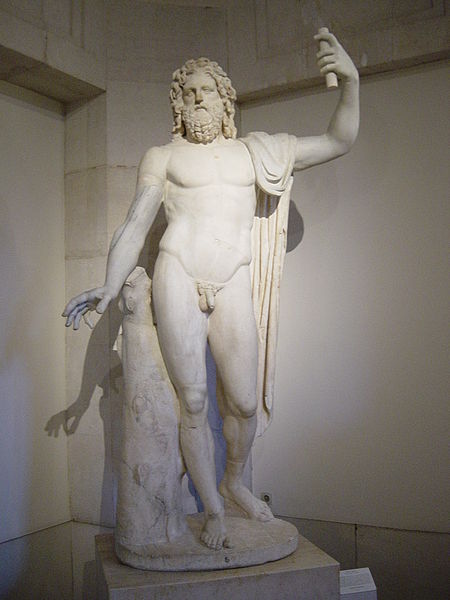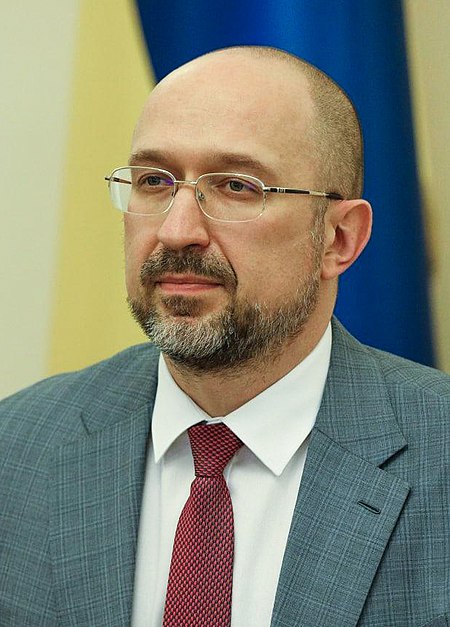Kwambi dialect
| |||||||||||||||||||||||||||||||||
Read other articles:

Fontaine-en-DormoiscomuneFontaine-en-Dormois – Veduta LocalizzazioneStato Francia RegioneGrand Est Dipartimento Marna ArrondissementSainte-Menehould CantoneArgonne Suippe et Vesle TerritorioCoordinate49°14′N 4°43′E / 49.233333°N 4.716667°E49.233333; 4.716667 (Fontaine-en-Dormois)Coordinate: 49°14′N 4°43′E / 49.233333°N 4.716667°E49.233333; 4.716667 (Fontaine-en-Dormois) Superficie5 km² Abitanti22[1] (2009) Densità4,4 …

American baseball player, manager, and executive Baseball player Paul RichardsCatcher / ManagerBorn: (1908-11-21)November 21, 1908Waxahachie, Texas, U.S.Died: May 4, 1986(1986-05-04) (aged 77)Waxahachie, Texas, U.S.Batted: RightThrew: RightMLB debutApril 17, 1932, for the Brooklyn DodgersLast MLB appearanceSeptember 22, 1946, for the Detroit TigersMLB statisticsBatting average.227Home runs15Runs batted in155Managerial record923–901Winning %.506 TeamsAs P…

This article needs additional citations for verification. Please help improve this article by adding citations to reliable sources. Unsourced material may be challenged and removed.Find sources: No. 7 Squadron IAF – news · newspapers · books · scholar · JSTOR (November 2022) (Learn how and when to remove this message) No. 7 Squadron7 Squadron badgeActive1 December 1942Country Republic of IndiaBranch Indian Air ForceRoleAir superiority Specialised Gro…

This article relies largely or entirely on a single source. Relevant discussion may be found on the talk page. Please help improve this article by introducing citations to additional sources.Find sources: List of emperors of the Yuan dynasty – news · newspapers · books · scholar · JSTOR (March 2021) Emperor of the Great Yuan大元皇帝ImperialFirst to reignKublai Khan1264–1294 DetailsStyleHis Imperial Majesty (陛下)Great Khan (大汗)First monar…

Questa voce o sezione sull'argomento mitologia non cita le fonti necessarie o quelle presenti sono insufficienti. Puoi migliorare questa voce aggiungendo citazioni da fonti attendibili secondo le linee guida sull'uso delle fonti. Segui i suggerimenti del progetto di riferimento. Nella mitologia romana, Disciplina era una divinità minore, personificazione della disciplina. La stessa parola disciplina, un nome latino, ha molte sfaccettature di significato. Si riferisce all'istruzione, alla f…

烏克蘭總理Прем'єр-міністр України烏克蘭國徽現任杰尼斯·什米加尔自2020年3月4日任命者烏克蘭總統任期總統任命首任維托爾德·福金设立1991年11月后继职位無网站www.kmu.gov.ua/control/en/(英文) 乌克兰 乌克兰政府与政治系列条目 宪法 政府 总统 弗拉基米尔·泽连斯基 總統辦公室 国家安全与国防事务委员会 总统代表(英语:Representatives of the President of Ukraine) 总理…

烏克蘭總理Прем'єр-міністр України烏克蘭國徽現任杰尼斯·什米加尔自2020年3月4日任命者烏克蘭總統任期總統任命首任維托爾德·福金设立1991年11月后继职位無网站www.kmu.gov.ua/control/en/(英文) 乌克兰 乌克兰政府与政治系列条目 宪法 政府 总统 弗拉基米尔·泽连斯基 總統辦公室 国家安全与国防事务委员会 总统代表(英语:Representatives of the President of Ukraine) 总理…

此条目序言章节没有充分总结全文内容要点。 (2019年3月21日)请考虑扩充序言,清晰概述条目所有重點。请在条目的讨论页讨论此问题。 哈萨克斯坦總統哈薩克總統旗現任Қасым-Жомарт Кемелұлы Тоқаев卡瑟姆若马尔特·托卡耶夫自2019年3月20日在任任期7年首任努尔苏丹·纳扎尔巴耶夫设立1990年4月24日(哈薩克蘇維埃社會主義共和國總統) 哈萨克斯坦 哈萨克斯坦政府與�…

此条目序言章节没有充分总结全文内容要点。 (2019年3月21日)请考虑扩充序言,清晰概述条目所有重點。请在条目的讨论页讨论此问题。 哈萨克斯坦總統哈薩克總統旗現任Қасым-Жомарт Кемелұлы Тоқаев卡瑟姆若马尔特·托卡耶夫自2019年3月20日在任任期7年首任努尔苏丹·纳扎尔巴耶夫设立1990年4月24日(哈薩克蘇維埃社會主義共和國總統) 哈萨克斯坦 哈萨克斯坦政府與�…

此条目序言章节没有充分总结全文内容要点。 (2019年3月21日)请考虑扩充序言,清晰概述条目所有重點。请在条目的讨论页讨论此问题。 哈萨克斯坦總統哈薩克總統旗現任Қасым-Жомарт Кемелұлы Тоқаев卡瑟姆若马尔特·托卡耶夫自2019年3月20日在任任期7年首任努尔苏丹·纳扎尔巴耶夫设立1990年4月24日(哈薩克蘇維埃社會主義共和國總統) 哈萨克斯坦 哈萨克斯坦政府與�…

JN23Stasiun Yaho谷保駅Pintu keluar utara Stasiun Yahoo, September 2019Lokasi5012 Yaho, Kunitachi-shi, Tokyo 186-0003JepangKoordinat35°40′53″N 139°26′49″E / 35.6813°N 139.4470°E / 35.6813; 139.4470Koordinat: 35°40′53″N 139°26′49″E / 35.6813°N 139.4470°E / 35.6813; 139.4470Operator JR EastJalurJN Jalur NambuLetak31.6 km dari KawasakiJumlah peron2 peron sisiLayanan Bus stop Informasi lainStatusStafSitus webSitus web resmiSej…

Dune that occurs on the top of a cliff This article relies largely or entirely on a single source. Relevant discussion may be found on the talk page. Please help improve this article by introducing citations to additional sources.Find sources: Cliff-top dune – news · newspapers · books · scholar · JSTOR (March 2012) Cliff-top dunes, also known as perched dunes, are dunes that occur on the tops of cliffs. They are uncommon in most parts of the world, becau…

Village in Wiltshire, England Human settlement in EnglandAldbourneHouses round the village green, overlooked by the churchAldbourneLocation within WiltshirePopulation1,833 (2011 Census)[1]OS grid referenceSU265756Unitary authorityWiltshireCeremonial countyWiltshireRegionSouth WestCountryEnglandSovereign stateUnited KingdomPost townMarlboroughPostcode districtSN8Dialling code01672PoliceWiltshireFireDorset and WiltshireAmbulanceSouth Western UK …

Bareq بارق BenderaLambang kebesaranNegara Arab SaudiPemerintahanPopulasi • Total50.113Zona waktuUTC+3 (EAT) • Musim panas (DST)UTC+3 (EAT)Kode area telepon+966-7 Bareq merupakan kota yang terletak di sebelah Selatan Arab Saudi. Penduduknya berjumlah 50,113 jiwa . Geografi Kota Bareq terletak sekitar 600 km sebelah selatan kota Mekkah, kurang lebih 120 km sebelah laut kota Abha. iklim Suhu tertinggi berkisar antara 28 °C sampai 40 °C pada waktu mu…

British retail post office company owned by the government of the United Kingdom Post Office LimitedNative nameWelsh: Swyddfa'r Post Cyf.Scottish Gaelic: Oifis a' PhuistIrish: Oifig an PhoistFormerlyPost Office Counters Ltd (1987–2001)[1]Company typeState-owned private company limited by sharesIndustryPostal servicePredecessorGeneral Post OfficeFounded13 August 1987[1]HeadquartersLondon, EnglandArea servedUnited KingdomKey peopleNick Read (CEO) [2]Revenue£957 …

Electro-mechanical keyboard musical instrumentNot to be confused with electronic piano or digital piano. This article has multiple issues. Please help improve it or discuss these issues on the talk page. (Learn how and when to remove these template messages) This article needs additional citations for verification. Please help improve this article by adding citations to reliable sources. Unsourced material may be challenged and removed.Find sources: Electric piano – news ·…

American political campaign Joe Biden for President 2020Campaign2020 Democratic primaries2020 U.S. presidential electionCandidateJoe Biden47th vice president of the United States(2009–2017)Kamala HarrisU.S. senator from California(2017–2021)AffiliationDemocratic PartyStatusAnnounced: April 25, 2019Official launch: May 18, 2019Presumptive nominee: April 8, 2020[a]Official nominee: August 18, 2020Election day: November 3, 2020Projected victory: November 7, 2020Inaugurated: January 20, …
Mönkloh Lambang kebesaranLetak Mönkloh di Segeberg NegaraJermanNegara bagianSchleswig-HolsteinKreisSegeberg Municipal assoc.Bad Bramstedt-LandPemerintahan • MayorSusanne MalzahnLuas • Total12,52 km2 (483 sq mi)Ketinggian24 m (79 ft)Populasi (2013-12-31)[1] • Total253 • Kepadatan0,20/km2 (0,52/sq mi)Zona waktuWET/WMPET (UTC+1/+2)Kode pos24576Kode area telepon04192Pelat kendaraanSESitus webwww.amt-bad-bram…

Pakistani Sunni scholar and jurist SyedSyed Abdul Qadir Jilaniالشيخ سيد عبد القادر الجيلانيSyed Abdul Qadir Jilani in 2011TitleMufakkir al-IslamPersonalBorn14 December 1935 (1935-12-14) (age 88)Rawalpindi, PakistanReligionIslamEraModernRegionSouth AsiaJurisprudenceHanafiCreedSunniMain interest(s)Theology, jurisprudence, SufismWebsitejilanimedia.com Syed Abdul Qadir Jilani (Persian: عبد القادر گیلانی, Urdu: عبد القادر گیلانی Abdolq�…

1925 film Countess MaritzaDirected byHans SteinhoffWritten byMax GlassJulius Brammer (libretto)Alfred Grünwald (libretto)StarringVivian GibsonHarry LiedtkeColette BrettelCinematographyNicolas FarkasMusic byEmmerich KálmánProductioncompanyTerra FilmDistributed byTerra FilmRelease date 20 November 1925 (1925-11-20) Running time85 minutesCountryGermanyLanguagesSilent German intertitles Countess Maritza (German: Gräfin Mariza) is a 1925 German silent film directed by Hans Steinhof…